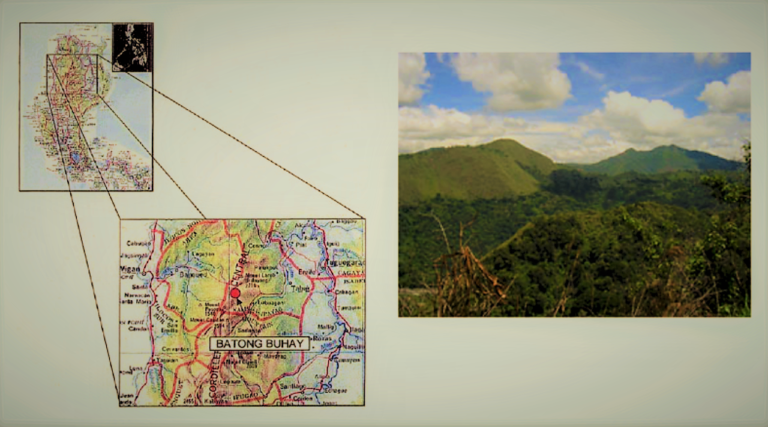PMO Asset Batong Buhay Gold Mines
BATONG BUHAY GOLD MINES, INC. was established in 1934 as an underground gold mine with a 300 TPD-capacity mill in Pasil, Kalinga. World War II broke out and the mine was closed. In 1969 to 1970, exploration for disseminated copper was undertaken for BBGMI by Nippon Mining Company of Japan. In the period of 1977 to 1978, BBGMI itself drilled 17 exploration holes, after which the company had decided to develop the area’s porphyry copper deposit. In December 1979, the government, through the Development Bank of the Philippines (DBP), took over the management, control and operation of BBGMI and appointed Philex Mining Corporation as its mining operator. The mine had produced 926,478 DMT at a mine head of 1.25% Cu for the year 1984 when it stopped operations because of insurgency problems. In June 1986, it was turned over to the Asset Privatization Trust (APT). Since then, the BBGMI property has been under the receivership of the government through its Privatization and Management Office (PMO) until is was transferred to Natural Resources Mining Development Corporation on April 7, 2006 for proper

LOCATION AND ACCESSIBILITY
The Batong Buhay Copper-Gold Project is located at Barangay Balatoc, Municipality of Pasil, Kalinga-Apayao Province, Northern Luzon. It is within the eastern flanks of the Cordillera Central Range and is about 320 km North of Manila. It is bounded by geographic coordinates 17°20’41.2” to 17°22’07.7” latitude and 121°03’10.40” to 121°05’07.2” longitude with an area of 492 hectares.
Geology
The Batong Buhay is underlain by basalts, quartz diorite to tonalite porphyries and dacitic rocks. The basalts are generally propylitic but also exhibit localized advanced argilllic alteration near the intermediate intrusives and major structures. The northeast-trending quartz diorite-tonalite porphyries occur as mini-stocks intruding the basalts. The quartz diorite-tonalite porphyries are magnetite-chalcopyrite-bornite bearing with potassic alteration overprinted by sericite-day-chlorite alteration. The dacitic rocks are generally weakly phyllic-altered and shows localized advance argillic alteration near the intrusives.
MINERALIZATION
Two significant mineralization styles were recognized at the Batong Buhay area namely, porphyry copper-gold and high sulphidation quartz-enargite gold vein mineralization. The high sulphidation-type mineralization and associated advance argillic alteration was observed to be superimposed on the earlier porphyry Cu-Au mineralization and alteration.
PORPHYRY CU-AU
At least two porphyry Cu-Au orebodies are found in the area. These are the Dickson and Malinao orebodies. These deposits are mainly hosted by sericite-day-chlorite-altered quartz diorite to tonalite porphyry.
The Dickson porphyry Cu-Au deposit has a high grade core with a diameter of 220 m and average assays of 1.43% Cu and 1.33 gpt Au, enveloped by an outer shell of 0.5% Cu. At the surface, the deposit shows primary chalcopyrite and secondary chalcocite+covellite+malachite mineralization. The Malinao orebody is roughly tabular in shape with dimensions of 800 m by 250 m. The primary copper mineral is chalcopyrite which is altered to secondary chalcocite, malachite and azurite.
HIGH SULPHIDATION QUARTZ-ENARGITE GOLD VEINS
There are gold-rich quartz veins encountered north and south of the Dickson and Malinao orebodies. These veins trend NS to NNW with widths ranging from 1 to 9 m. The veins are vuggy, chalcedonic and contain chalcopyrite, enargite, covellite and tennantite. The vein is hosted in advance argillic altered tonalite porphyry and basalt
ORE RESERVE
The mineable reserve is 86.9 M metric tons at 0.599% Cu and 0.253 gpt Au.
DATA SOURCES: Mines and Geosciences Bureau Privatization and Management Office

